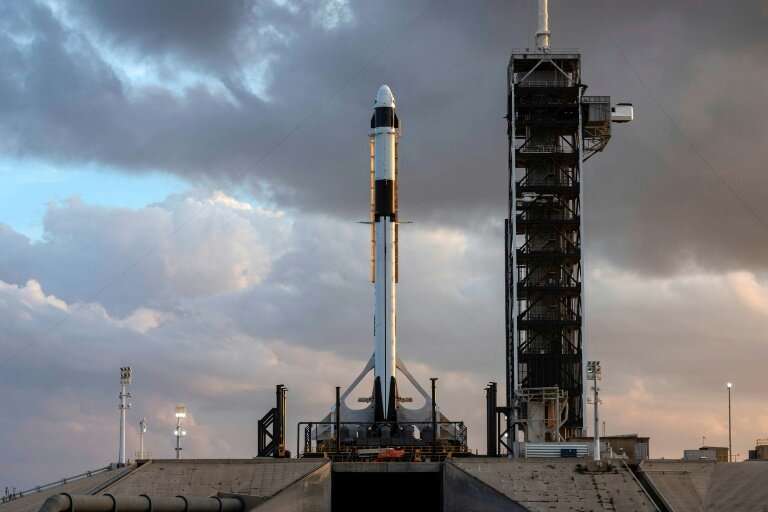SpaceX to launch test for resumption of manned US flights

SpaceX will try to send a dummy to the International Space Station this weekend in a key test for resuming manned US space flights, perhaps this year if all goes well.
Since the shuttle Atlantis returned to earth on July 21, 2011, no American astronaut has blasted off from US soil for a tour in space.
NASA pays Russia to get its people up to the orbiting research facility at a cost of 82 million dollars a head, round trip.
In 2014, the US space agency awarded contracts to SpaceX and Boeing for them to take over this task.
But the program has suffered delays as safety requirements are much more stringent for manned flights than for unmanned missions to deploy satellites.
No one in America wants to relive the tragedies of the US space shuttles Challenger and Columbia, which disintegrated in mid-air in 1986 and 2003.
Three years behind schedule, a Falcon 9 rocket is scheduled to blast off Saturday from Cape Canaveral at 2:49 am (0749 GMT) with a Crew Dragon capsule in its nose. It will aim for a rendezvous one day later with the ISS. The capsule is scheduled to return to Earth on March 8.
If all goes well, two astronauts will be aboard the next time such a seven-seat capsule is launched. That is supposed to happen in July but delays are possible.
"These things always take longer than you think," said Lori Garver, who was the number two official at NASA when the contracts were awarded to SpaceX and Boeing under then president Barack Obama.
Back then this decision was controversial, with lawmakers complaining about changing the way America sends people into space and the loss of contracts and jobs for big, veteran aerospace companies based in their states.
"We have very few heroes left, and astronauts are our heroes. And loosening our grip at NASA and allowing companies to take the lead on transporting them was a challenge for some. It still is," said Garver.
Less expensive
SpaceX is no rookie when it comes to trips to and from the space station. The company founded by Elon Musk and based in Los Angeles has carried out 15 resupply missions to the orbiter since 2012. One of its ISS-bound rockets exploded in 2015.
The second, crewed version of the Dragon rocket has been adapted from the cargo model, which has proved to be reliable.
Saturday's mission is still a "big deal," said SpaceX vice president Hans Koenigsmann.
"This is an absolutely critical first step that we do as we move towards returning the crewed launch capability back here to the US," said William Gerstenmaier, associate administrator with NASA Human Exploration and Operations.
It has taken years to get within reach of that goal.
"I don't think very many people thought that the length of time between the termination of Shuttle and a new vehicle was going to be as long as it has been," said Roger Launius, former chief historian of NASA.
The cooling of US relations with Russia has increased pressure for the US to be able to send people to space on its own.
NASA has always relied on the aerospace industry for its manned space programs. Launius recalls that back in the days of the Apollo moon missions "almost everybody in that room were contractors, not NASA employees."
What is new now is that NASA no longer covers all development costs and does not own the spacecraft that will be used to send people into space.
Rather, it buys a service for a set price: the 2014 contracts call for $4.2 billion for Boeing and $2.6 billion for SpaceX, with six missions and a test flight.
That is a fraction of the $4 billion per year it would have cost to keep the original shuttle program alive, said Garver.
An unmanned Boeing test flight is scheduled for April.
Michael Neufeld, head curator in the Space History Department of the Smithsonian Air & Space Museum, stressed the significance of NASA opting to go with two companies that are competitors.
"One of the lessons of the shuttle is, don't bet on one vehicle," he said. "If there's an accident at least you're not totally stuck."
© 2019 AFP




















